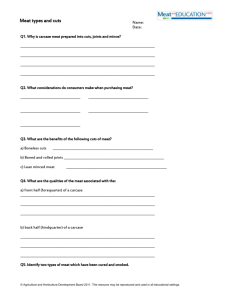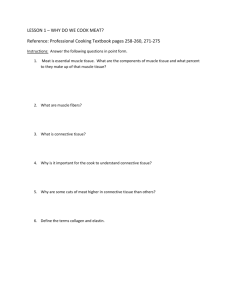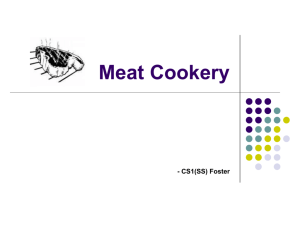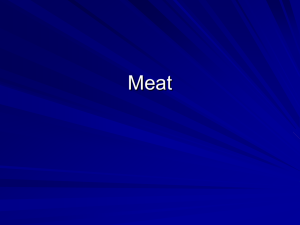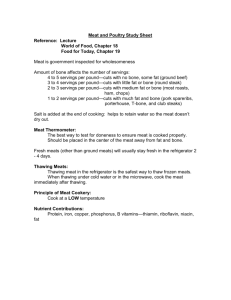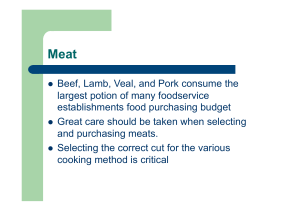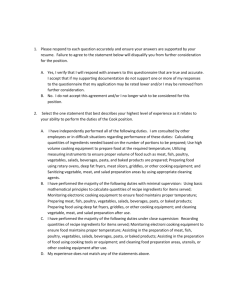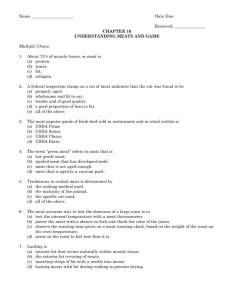Name - Meat and Education
advertisement
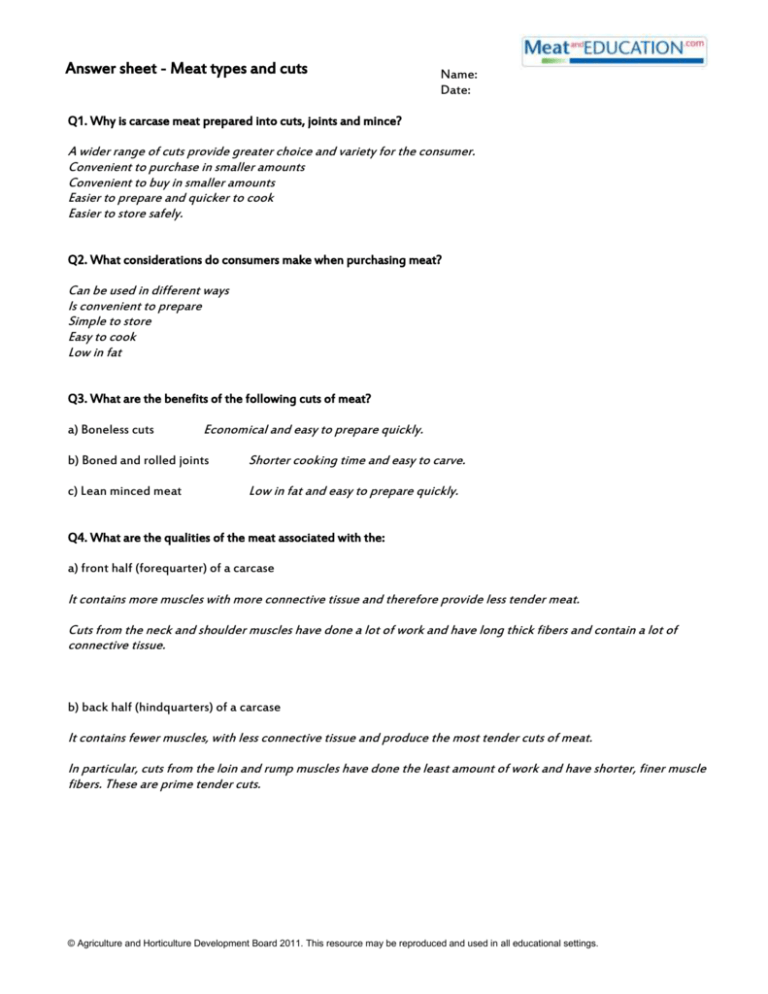
Answer sheet - Meat types and cuts Name: Date: Q1. Why is carcase meat prepared into cuts, joints and mince? A wider range of cuts provide greater choice and variety for the consumer. Convenient to purchase in smaller amounts Convenient to buy in smaller amounts Easier to prepare and quicker to cook Easier to store safely. Q2. What considerations do consumers make when purchasing meat? Can be used in different ways Is convenient to prepare Simple to store Easy to cook Low in fat Q3. What are the benefits of the following cuts of meat? a) Boneless cuts Economical and easy to prepare quickly. b) Boned and rolled joints Shorter cooking time and easy to carve. c) Lean minced meat Low in fat and easy to prepare quickly. Q4. What are the qualities of the meat associated with the: a) front half (forequarter) of a carcase It contains more muscles with more connective tissue and therefore provide less tender meat. Cuts from the neck and shoulder muscles have done a lot of work and have long thick fibers and contain a lot of connective tissue. b) back half (hindquarters) of a carcase It contains fewer muscles, with less connective tissue and produce the most tender cuts of meat. In particular, cuts from the loin and rump muscles have done the least amount of work and have shorter, finer muscle fibers. These are prime tender cuts. © Agriculture and Horticulture Development Board 2011. This resource may be reproduced and used in all educational settings. Q5. Identify two types of meat which have been cured and smoked. Bacon and gammon. Q6. Identify three types of offal: a) inside the carase Liver, kidney, heart, tongue, sweetbreads, blood and tripe. b) outside the carcase Pig trotters, ox cheeks and ox tail. Q7. Link the cooking technique with the definition. Barbequing Cooking food using dry, high temperatures in an oven. The dry heat caramelizes the surface of the meat. Frying Cooking a joint of meat, which has first been browned, on top of vegetables, with very little liquid, in a pot with a tight fitting lid. Grilling Cooking food (normally in an outdoor environment) on a pre-heated trivet or grill, over wood or charcoal embers or gas flame. Roasting Slowly cooking tougher cuts of meat, in plenty of liquid with a tight fitting lid. Braised meat sits on a bed of vegetables with strong stock. The cut of meat used is normally cubed, diced or steaks. Pot Roasting Shallow: cooking food, in a small amount of fat, in a shallow pan. Stir: quickly cooking food, with or without fat, over a high heat. Deep: Cooking food in a large amount of pre-heated fat. Casseroling/Braising/Stewing Quickly cooking or browning food under the radiant heat of an electric element or gas flame. This is only appropriate for tender cuts of meat, no more than 5 cm thick © Agriculture and Horticulture Development Board 2011. This resource may be reproduced and used in all educational settings.
